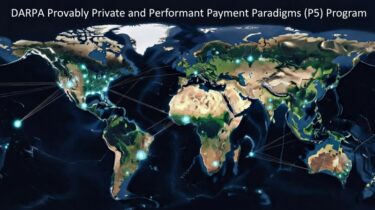DARPA is looking to develop better tools and techniques to not only detect, but also deploy, covert communication systems, aka “weird networks” with its PWND² program.
On Monday, the US Defense Advanced Research Project Agency (DARPA) put out a special notice for its “Provably Weird Network Deployment and Detection” (PWND²) program.
“Currently, both the internet freedom and national security communities manually design hidden communication systems with ad hoc techniques, validate them via empirical testing, and deploy them without any guarantees that users will not be discovered,” according to the special notice.
“The PWND² program will develop formal models of emergent communication pathways (weird networks) to fundamentally improve how we deploy and detect robust and resilient hidden networks in the real world”
DARPA PWND² Program Special Notice, August 2024
So-called “weird” or covert networks are used by a wide range of actors; some good, some bad, and some in between, including governments, terrorists, and businesses, along with freedom-loving communities that value privacy.
As research published in Science Direct explains, “The goal is to keep the communications private and away from prying eyes. Businesses, governments, and individuals have always had covert communications. For reasons of business operations, national security, or personal privacy, the goal of keeping the communications private is the same.”
Now, DARPA is looking to improve upon its already existing methods of deploying and detecting “robust and resilient hidden networks in the real world.”
DARPA’s PWND² program “will test the technical hypothesis that software-defined networking approaches paired with novel formal methods techniques can provide provable privacy and performance guarantees for hidden communication systems at meaningful scale.”
The program consists of only one technical area (TA) divided into two focus areas (FAs) with integrated teams testing the hypothesis on existing, known weird network examples.
- FA1 will research and develop a domain specific language (DSL) to model emergent, hidden communications
- FA2 will research and develop analysis tools and techniques grounded in formal methods to examine hidden communications systems represented in the FA1 DSL
- FA2 will seek to provide provable performance, scalability, security, and privacy guarantees
“Over the course of the program, teams must demonstrate that their approaches can scale to networks consisting of thousands of nodes.”
Leading the PWND² is program manager Michael Lack, whose “research interests focus on privacy, secure communications, cybersecurity, and embedded systems.”
At DARPA, Lack has been involved with a couple research programs:
- Measuring the Information Control Environment (MICE): to develop algorithms and prototype open-source software that measures how authoritarian regimes employ digitally repressive techniques, such as censorship, blocking, or throttling, at scale over the internet, as well as the technical capabilities used to enable such activities
- Resilient Anonymous Communication for Everyone (RACE): to research technologies for a distributed messaging system that can: a) exist completely within a given network, b) provide confidentiality, integrity, and availability of messaging, and c) preserve privacy to any participant in the system
Previously, Lack was a chief scientist within STR’s Cyber and Physical Systems division, and before that he was the senior vice president of Research and Development (R&D) at Two Six Technologies.
While DARPA research programs are military-oriented in nature, the tools, techniques, and technologies often find their way into the private sector.
Image [AI-generated] by freepik










